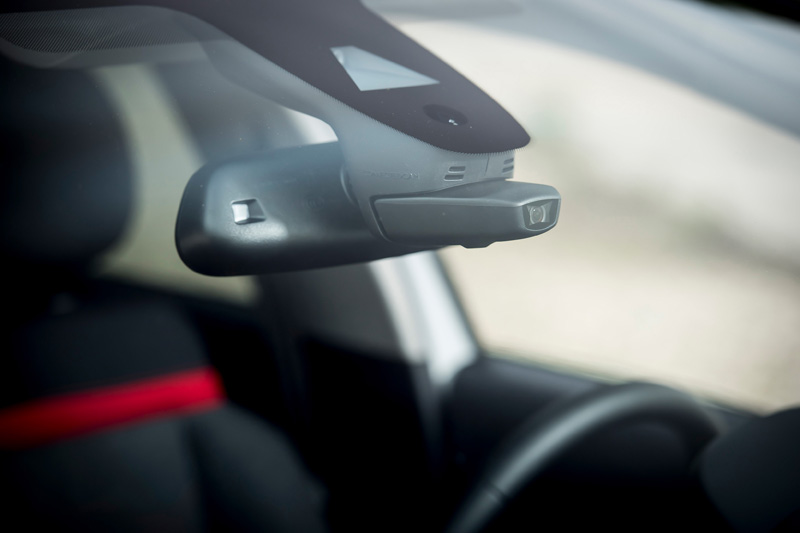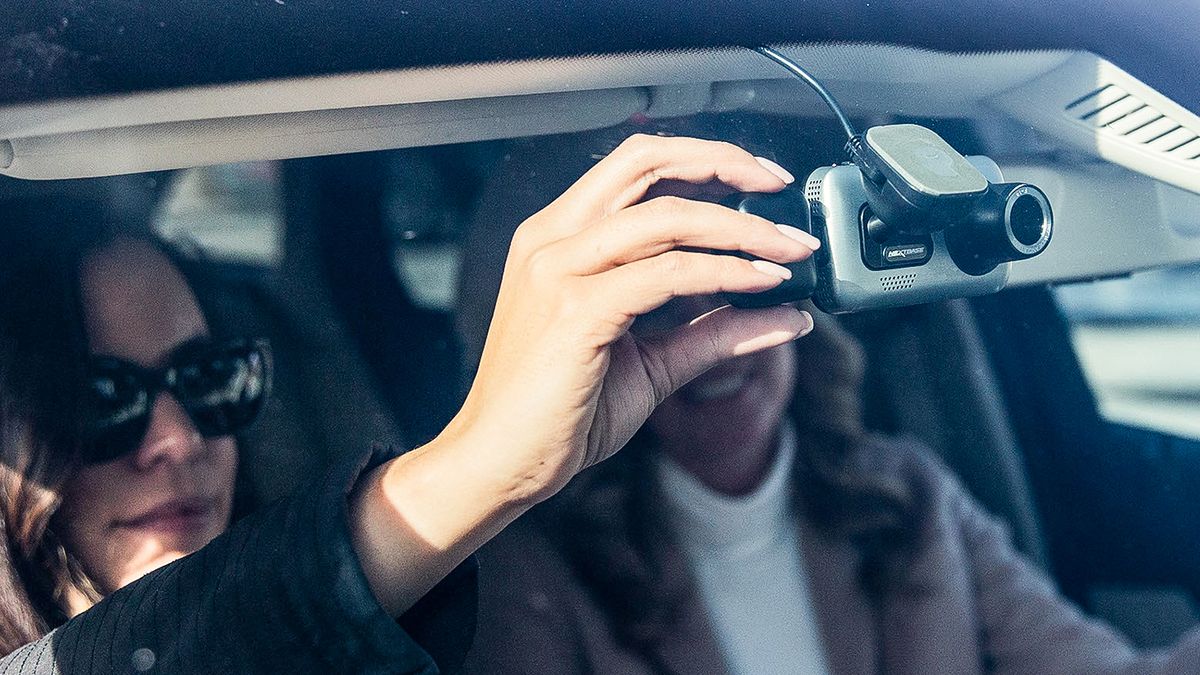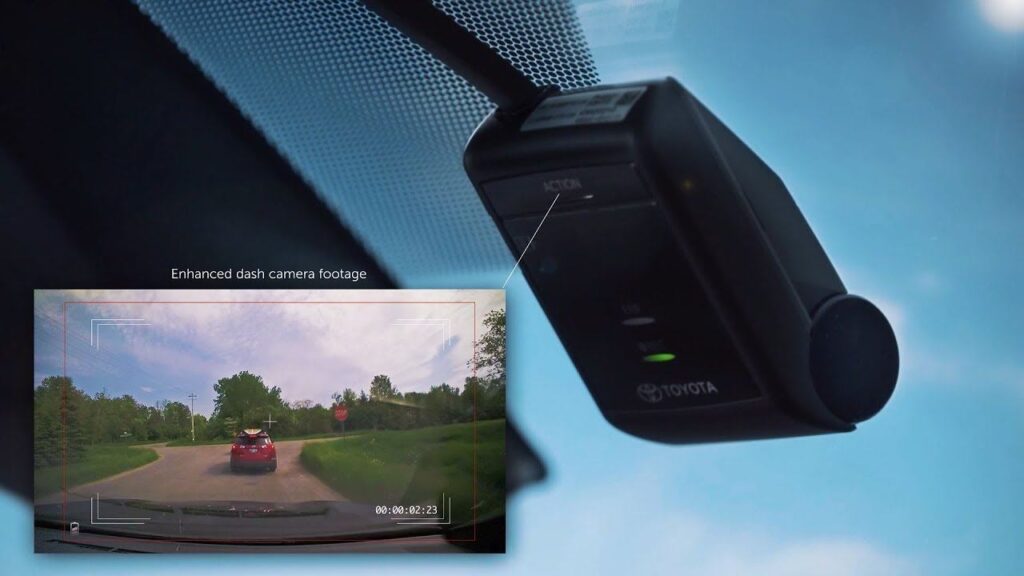How Integrated Dash Cams Improve Security, transforming the way we drive and safeguard our vehicles. Gone are the days of bulky aftermarket dash cams; today’s integrated systems seamlessly blend with modern vehicles, offering a suite of features that go far beyond simple recording.
Integrated dash cams, now a common feature in many new cars, offer a compelling alternative to traditional aftermarket models. These systems, seamlessly integrated into the vehicle’s design, boast enhanced functionality and a more streamlined user experience. From advanced driver assistance features to real-time monitoring and comprehensive security solutions, integrated dash cams are revolutionizing the way we think about road safety and vehicle protection.
Contents
Real-Time Monitoring and Alerts
Imagine a system that not only records your journey but also actively assists you in staying safe on the road. Integrated dash cams go beyond mere recording, offering real-time monitoring and alerts that can make a crucial difference in preventing accidents and enhancing your driving experience.
These intelligent devices leverage advanced technology to analyze your surroundings and provide timely warnings, helping you make informed decisions and stay in control.
Collision Warnings, How Integrated Dash Cams Improve Security
Collision warnings are a critical safety feature that can help prevent accidents. By analyzing data from sensors and cameras, the dash cam can detect potential collisions and alert the driver with visual and audible warnings. This gives the driver precious seconds to react and avoid a collision.
Lane Departure Alerts
Lane departure alerts are designed to help drivers stay in their lane, especially during long drives or when fatigue sets in. The dash cam uses cameras to track lane markings and alerts the driver if the vehicle starts to drift out of its lane. This helps prevent accidents caused by driver inattention or drowsiness.
Driver Fatigue Detection
Driver fatigue is a major contributor to road accidents. Integrated dash cams can help mitigate this risk by monitoring the driver’s behavior and detecting signs of fatigue, such as prolonged periods of inattentiveness or erratic driving patterns. The system can then issue alerts to encourage the driver to take a break or pull over to rest.
Evidence in Case of Accidents and Incidents
In today’s world, where accidents and incidents are unfortunately commonplace, having a reliable record of events can be crucial for legal protection and resolving disputes. Integrated dash cams play a vital role in this regard by providing irrefutable evidence that can be used to clarify the situation and ensure fair outcomes.
Legal Protection
Dash cam footage can be a powerful tool in legal proceedings, offering a neutral and objective perspective of the events that transpired. This footage can be used to:
- Support Insurance Claims: When an accident occurs, dash cam footage can provide vital information to support insurance claims. This includes details like the time, location, and sequence of events, which can help determine fault and expedite the claims process. For instance, if a driver is involved in a rear-end collision, dash cam footage can clearly show if they were stopped or moving at the time of impact, providing crucial evidence to support their claim.
- Exonerate Drivers in False Claims: Dash cam footage can be invaluable in cases where a driver is falsely accused of wrongdoing. It can demonstrate their innocence by capturing the events leading up to the incident, revealing the true cause of the accident or incident. For example, if a driver is accused of reckless driving, dash cam footage can show that they were driving safely and responsibly, thereby protecting them from false accusations.
- Resolve Disputes: In cases where there are conflicting accounts of an accident or incident, dash cam footage can provide a neutral and unbiased perspective. It can help resolve disputes between drivers, passengers, and even pedestrians, by presenting a clear and accurate record of events. This can be particularly helpful in situations where witnesses are unavailable or their accounts are inconsistent.
Integration with Connected Car Technology: How Integrated Dash Cams Improve Security

The future of driving is becoming increasingly connected, and integrated dash cams are playing a vital role in this evolution. By seamlessly integrating with other connected car features, these devices enhance safety, convenience, and the overall driving experience.
Integration with Infotainment Systems and Mobile Apps
Integrated dash cams can seamlessly connect with a vehicle’s infotainment system and mobile apps, creating a unified and user-friendly experience. This integration allows drivers to easily access and manage dash cam footage directly from the car’s touchscreen or a smartphone app.
- Real-Time Viewing: Drivers can view live footage from the dash cam on the infotainment system’s screen, providing an additional layer of situational awareness. This can be particularly useful in navigating busy intersections or tight parking spaces.
- Remote Access and Control: With mobile app integration, drivers can remotely access and control the dash cam from their smartphones. This allows them to view recorded footage, adjust settings, and even trigger recording manually.
- Data Sharing and Analysis: Integrated dash cams can share data with connected car platforms, providing valuable insights for driver behavior analysis, accident prevention, and fleet management.
Privacy Concerns and Ethical Considerations
While integrated dash cams offer significant security benefits, they also raise important privacy concerns and ethical considerations. Balancing these aspects is crucial to ensure responsible and ethical implementation of this technology.
Data Collection and Storage
Dash cams continuously record video footage, capturing images of individuals, vehicles, and surroundings. This raises concerns about the collection and storage of personal data, particularly regarding the potential for misuse or unauthorized access.
- Data Ownership and Access: Who owns the recorded data? The vehicle owner, the manufacturer, or a third-party service provider? What are the policies governing access to this data?
- Data Retention and Deletion: How long is the data stored? Are there mechanisms for secure deletion of data after a certain period?
- Data Security: What measures are in place to protect the data from unauthorized access, cyberattacks, and data breaches?
Data Sharing and Disclosure
The sharing and disclosure of recorded data present significant ethical considerations.
- Transparency and Consent: Are individuals aware of the data being collected and how it is being used? Do they have the right to opt-out of data collection or sharing?
- Law Enforcement Access: What are the legal frameworks governing access to dash cam footage by law enforcement agencies? Are there safeguards to prevent misuse or abuse?
- Third-Party Access: Are there provisions for sharing data with third-party service providers for purposes such as insurance claims or traffic analysis? What are the security and privacy implications of such sharing?
Addressing Privacy Concerns
To address these concerns and promote responsible use of integrated dash cams, several steps can be taken:
- Data Minimization: Only collect and store the data that is absolutely necessary for the intended purpose.
- Data Encryption: Implement robust encryption techniques to protect data during transmission and storage.
- Clear Privacy Policies: Provide clear and concise privacy policies that inform users about data collection, storage, sharing, and access practices.
- User Control: Give users control over data collection, sharing, and deletion settings.
- Data Anonymization: Anonymize data whenever possible to protect the identity of individuals.
- Independent Audits: Conduct regular independent audits to ensure compliance with privacy regulations and best practices.
Future Trends

The landscape of integrated dash cams is constantly evolving, driven by advancements in technology and the growing demand for enhanced safety and security features in vehicles. As these devices become more sophisticated, they are poised to play an even more significant role in the future of driving.
Advancements in AI, Computer Vision, and Cloud Computing
The integration of artificial intelligence (AI), computer vision, and cloud computing is set to revolutionize the capabilities of dash cams.
- AI-Powered Driver Assistance: AI algorithms can analyze real-time video footage to detect potential hazards, such as lane departure, drowsiness, and distracted driving. These systems can provide alerts to drivers, helping to prevent accidents and improve road safety.
- Advanced Object Recognition: Computer vision technology allows dash cams to recognize and classify objects in the environment, such as pedestrians, cyclists, and other vehicles. This information can be used to enhance driver awareness and provide more accurate collision warnings.
- Cloud-Based Data Storage and Analysis: Cloud computing enables the storage and analysis of large volumes of dash cam data. This data can be used to identify trends in driving behavior, optimize route planning, and improve insurance risk assessment.
The Role of Integrated Dash Cams in Autonomous Vehicles
As autonomous vehicles become more prevalent, integrated dash cams will play a crucial role in their development and deployment.
- Data Collection for Training Algorithms: Dash cams can collect vast amounts of data about real-world driving conditions, which is essential for training and refining the algorithms that power autonomous vehicles.
- Enhanced Safety and Security: Dash cams can provide valuable evidence in the event of an accident involving an autonomous vehicle, helping to determine liability and improve safety protocols.
- Real-Time Environmental Monitoring: Integrated dash cams can monitor the vehicle’s surroundings in real-time, providing critical information to the autonomous driving system for navigation and obstacle avoidance.

